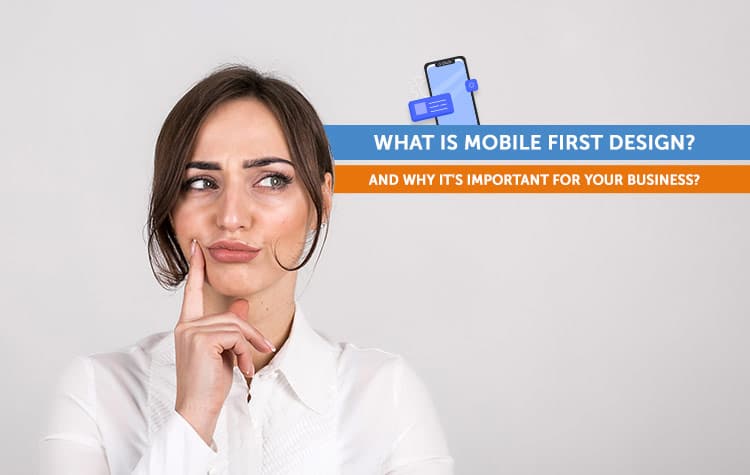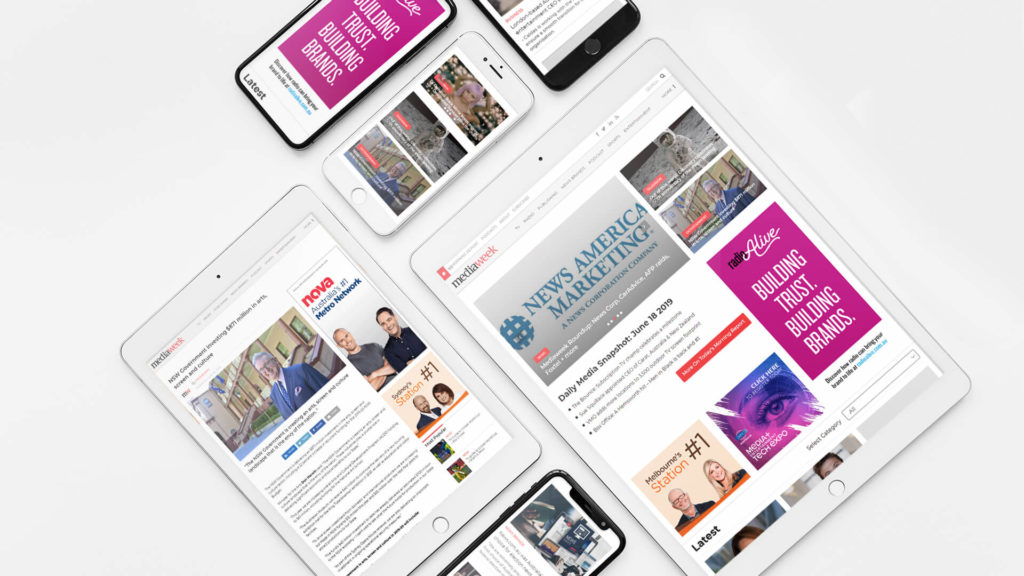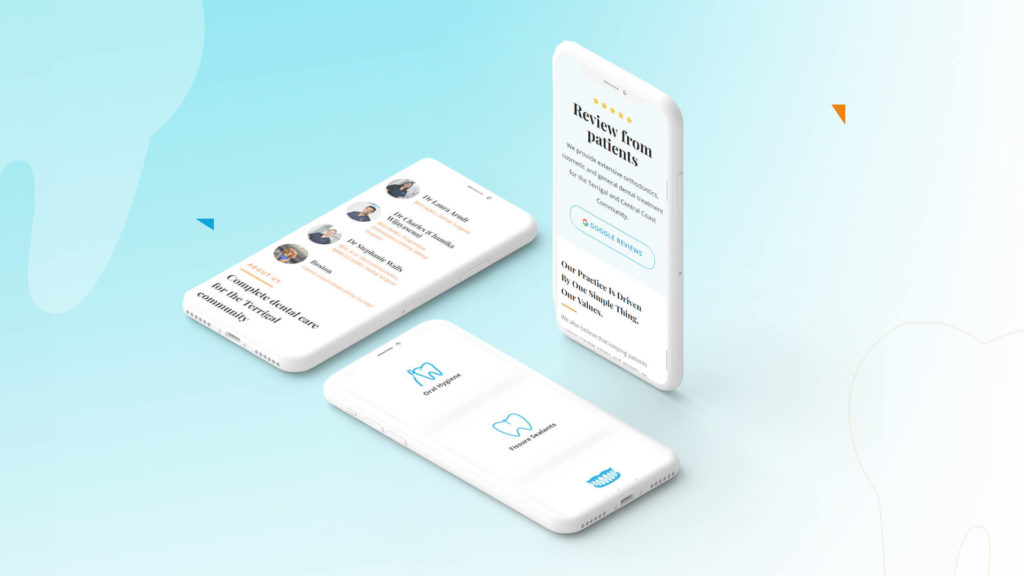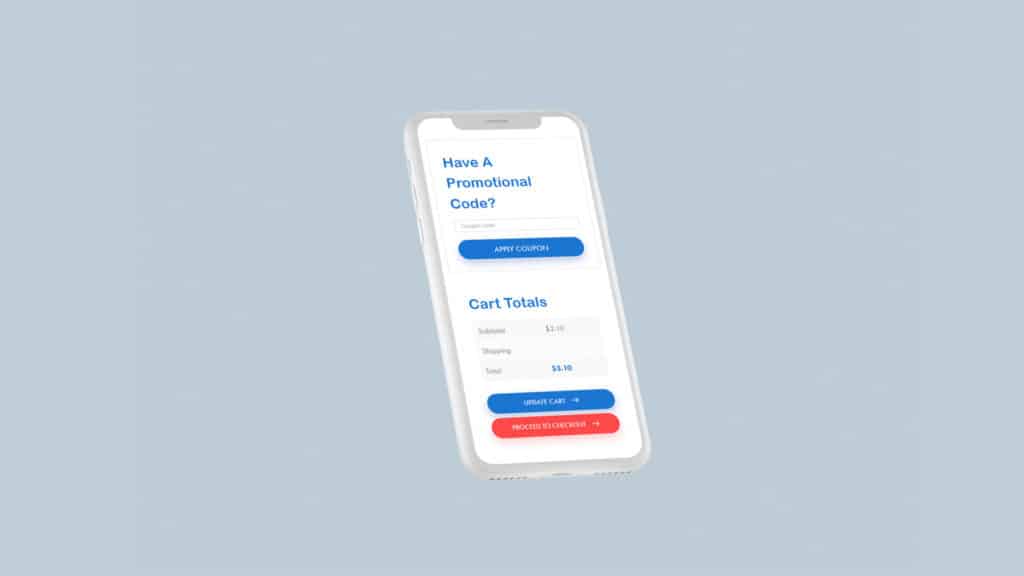Today, mobile phones dominate our lives more than ever before. They are no longer considered a luxury but rather a necessity. Can any of us imagine spending a day without using our mobile phone? We bet, none of us can!
According to an estimate, by the year 2020, the number of smartphone devices in the world will skyrocket to 6.1 billion. This figure indicates that among all the gadgets, the importance of mobile phones will be the most in the upcoming years. In fact, it is still quite high. Currently, around 52% of the total web traffic comes from mobile phones. That is precisely why it is important for your business to have a mobile-first website.
Now, the question arises, what exactly do we mean by mobile-first website design? Do not worry. We have got the most elaborate answer for you!
What Is A Mobile-First Design?
Mobile-First design is a website design that is developed to facilitate mobile users first and foremost. Its main aim is to provide the best user experience to people who visit the website on their cell phone. They are the first priority of web developers who focus on such a design.
The concept of mobile-first design is based on the principle of progressive advancement. This principle propagates designing a website that is compatible with a lower browser first, such as that of a mobile phone. Once that group has been tackled, then progression can be made towards more advanced browsers by adding in more features. This approach has proved beneficial in providing a better user experience.
However, it is important to clarify that mobile-first design is not the same as responsive web design. Both concepts may seem identical, but they are not. Responsive web design aims to design a website in such a way that it is optimized for all sorts of devices. If a person visits a website on a cell phone and another person visits the same website on a laptop, then both of them should be able to enjoy all the features of the website without any inconvenience. The main aim of this approach is to enhance the user experience of all users, irrespective of the browser they are using. On the other hand, the mobile-first design aims to optimise the user experience of mobile users first, and then gradually progress towards enhancing the experience of other users. It believes in catering to the most important as well as the broadest group of visitors first. Once that has been done, then the rest of the users are taken into consideration.
Why Is Mobile-First Design Important?
Ask yourself a question. Which one is the most important gadget in your life? A gadget that you cannot imagine spending a day without!
“MOBILE PHONE. MOBILE PHONE. MOBILE PHONE.”
That is what almost all of you must have answered, right? And, that is exactly what has parachuted the importance of mobile-first design!
Here are the 5 things that make adopting a mobile-first design extremely important for the businesses:
-
Google gives priority to mobile-first websites.
Earlier, Google had been following a different algorithm as well as ranking criteria. Recently, it has replaced it with a new criterion. Now, recent updates to Google’s algorithm and criteria give priority to mobile-first websites. So if you want your website to have a higher visibility and Google ranking, you should definitely have a mobile-first website design.
-
Websites based on mobile-first design provide a better user experience.
There is nothing more important for a website than to provide a better user experience to its visitors. That is exactly what provides an edge to a business over its competitors! According to research, 61% of the visitors will stop browsing through a website that does not appear to be user-friendly and, 40% of such visitors will switch to a competitors’ website. Resultantly, websites that fail to satisfy their visitors end up losing potential customers to their competitors. What could be worse than that in such a cut-throat competitive business environment? Nothing!
-
Mobile-first design website allows you to gain the maximum advantage of social media usage.
Among web users, the biggest group is that of Millenials. They use the internet the most. On the internet, they specifically use social media avidly. According to an estimate, 55% of social media users browse on their mobile phones. Hence, the smart thing to do is to gain the advantage of this social media craze. Your business can use social media as a channel to divert traffic to its website. However, this will only be possible if you have a mobile-first design website taking into consideration that most of the people use social media apps on their phone!
-
You can increase your conversions by getting a website developed based on mobile-first design.
Even though mobile phones are the most frequently used gadget, they are not customers’ first choice when it comes to online shopping. Research shows that 57.5% of mobile users do not do shopping using a mobile phone. They are hesitant to shop via mobile phones because of mobile-unfriendly websites. Customers often complain that e-commerce sites are not optimized for mobile phone browsers. This results in great inconvenience. Consequently, mobile-unfriendly websites become a cause of disparity of 3% between mobile phone conversions and computer conversions. If you wish to increase your conversions, try using a mobile-first design for your website!
-
Mobile-first design websites help in increasing traffic inflow.
Website traffic is something that all businesses run after. What makes it so desirable is its positive effect on several other essential elements of a business. High traffic inflow increases conversion rates, which in turn booms the sales. Approximately 52% of the total web traffic is generated from mobile phones. This means that if your business has a website that is based on mobile-first design, then you can instantly expect a higher traffic inflow and eventually, a higher turnover!
Conclusion
Mobile phones have undoubtedly become the leader of gadgets. They can be found in almost everyone’s pockets and purses. You can find 5-year-old surfing on a mobile phone as well as a 50-year-old doing the same. Hence, by making your website mobile-friendly and opting for a mobile-first design, you can cater to any and every age group.
If after reading this article you have been convinced to opt for a mobile-first design website, then talk to one of our web experts to discuss your business and needs. We will tailor our solution based on your target audience and your business goals.





